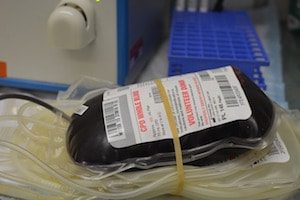Hospital Inventory Management: 3 Best Practices


Hospitals often come under fire for inefficiently managing supplies and spending too much on inventory. As hospitals are forced to tighten their belts, materials managers, suppliers, and staff members are pressured to address inventory management; unfortunately, they often are told to do so in a time-consuming fashion involving manual processes that are inefficient and subject to human error.
If staff time is spent manually managing inventory and tracking usage across multiple supply locations, hospitals aren’t doing much to correct their inventory management issues. They also aren’t helping themselves when it comes to preparing reports, maintaining compliance, and documenting usage. They also lack a consistent system for filling last-minute orders from nurses and doctors.
To streamline hospital inventory management and automate supply and medication distribution, hospital executives need to implement best practices such as investing in a hospital supply management system and streamlining inventory management tasks.
Hospitals that take steps along these lines will improve staff efficiency, reduce inventory supply costs, and improve the bottom line. Read on to learn more about our tips for hospital inventory management.

Implementing a healthcare supply chain management system assists hospitals in reducing spending and keeping their budgets in line.
Healthcare supply chain management is complex because it is fragmented and, according to RevCycle Intelligence’s Jacqueline Belliveau, “involves obtaining resources, managing supplies, and delivering goods and services to providers and patients. To complete the process, physical goods and information about medical products and services usually go through a number of independent stakeholders, including manufacturers, insurance companies, hospitals, providers, group purchasing organizations, and several regulatory agencies.
However, by promoting efficiency in the healthcare supply chain, hospitals and physician practices can create substantial cost-reducing opportunities across their organization.”
Medical providers use a plethora of items each day to treat patients, and they use several of each item throughout their shifts. Employees stock these items, which come from distribution centers or directly from manufacturers, so there may be many organizations involved in getting providers the inventory they need on a daily basis. Supply chain management involves each of these organizations in addition to regulatory agencies, like the Federal Drug Administration, and insurance companies. Managing this supply chain is difficult not only because it is fragmented but also because various stakeholders have their own goals; for example, doctors and nurses are comfortable with certain products but hospital executives typically purchase the most affordable, high-quality items available.
For these reasons, implementing a hospital supply chain management system is a must. Choosing a platform involves finding a solution that meets your organization’s needs with features such as automated inventory management, automatic data capture, mobile access, and data storage.
An automated inventory management system is a must for a busy hospital to streamline the hospital supply chain. These automated inventory management systems include technologies for tracking and tracing inventory and devices used each day in a healthcare setting. Often, they utilize barcodes and RFID tags with unique identification numbers for each inventory item to allow for accurate tracking and management. Nurses and doctors can scan the barcodes with mobile scanners or devices and trust the data will be stored in the system; at the same time, the automatic data capture ensures accurate reporting for charting and inventory purposes.
Automated inventory management systems also assist healthcare providers in identifying whether products have been recalled or damaged and being proactive about avoiding giving such products or medications to patients. Additionally, automated inventory management helps identify drugs and devices that are used frequently and forecasts potential shortages. Inventory managers have access to the data and can set minimum inventory levels that will automatically place orders for items before there is a shortage. Thus, costs stay down as hospitals automatically adopt lean practices through the use of automated inventory management.

To maximize the efficiency of your automated inventory management system as part of your larger hospital supply chain management system, you should use asset tags. Use your inventory management system to assign labels to your equipment with barcodes featuring unique identification numbers for each item.
Do not use the items’ serial numbers as their identification numbers because manufacturers may duplicate serial numbers, and that will make tracking individual pieces of equipment virtually impossible for your healthcare organization.
Tagging medical equipment is critical to tracking their usage and enabling quick check-out and check-in for healthcare providers. Tracking medical instruments saves money by virtually eliminating loss and theft. It also streamlines the maintenance of the equipment and helps managers monitor the lifecycle of valuable medical equipment.
Scanning tags for equipment check-out and check-in also increases visibility into your assets and helps you uncover missing items by knowing who used them last and where. Overall, asset tags with barcode labels help you reduce inventory costs and increase staff efficiency and productivity by streamlining the check-out and check-in process.
When your hospital adopts inventory management best practices, such as implementing a hospital supply chain management system, adopting an automated inventory management system, and using tags for efficient check-out and check-in of medical equipment, you will reap the benefits and maximize your return on investment. The most significant benefits of streamlining your hospital inventory management practices include:
Our sales engineers are experts in automatic asset tracking, tagging and identification,a nd can answer all your questions. Get in touch now.
Lets Talk ›Enter your information and get a free checklist of the top questions to answer and tips to plan a successful asset tagging project for any asset management or tracking system implementation.